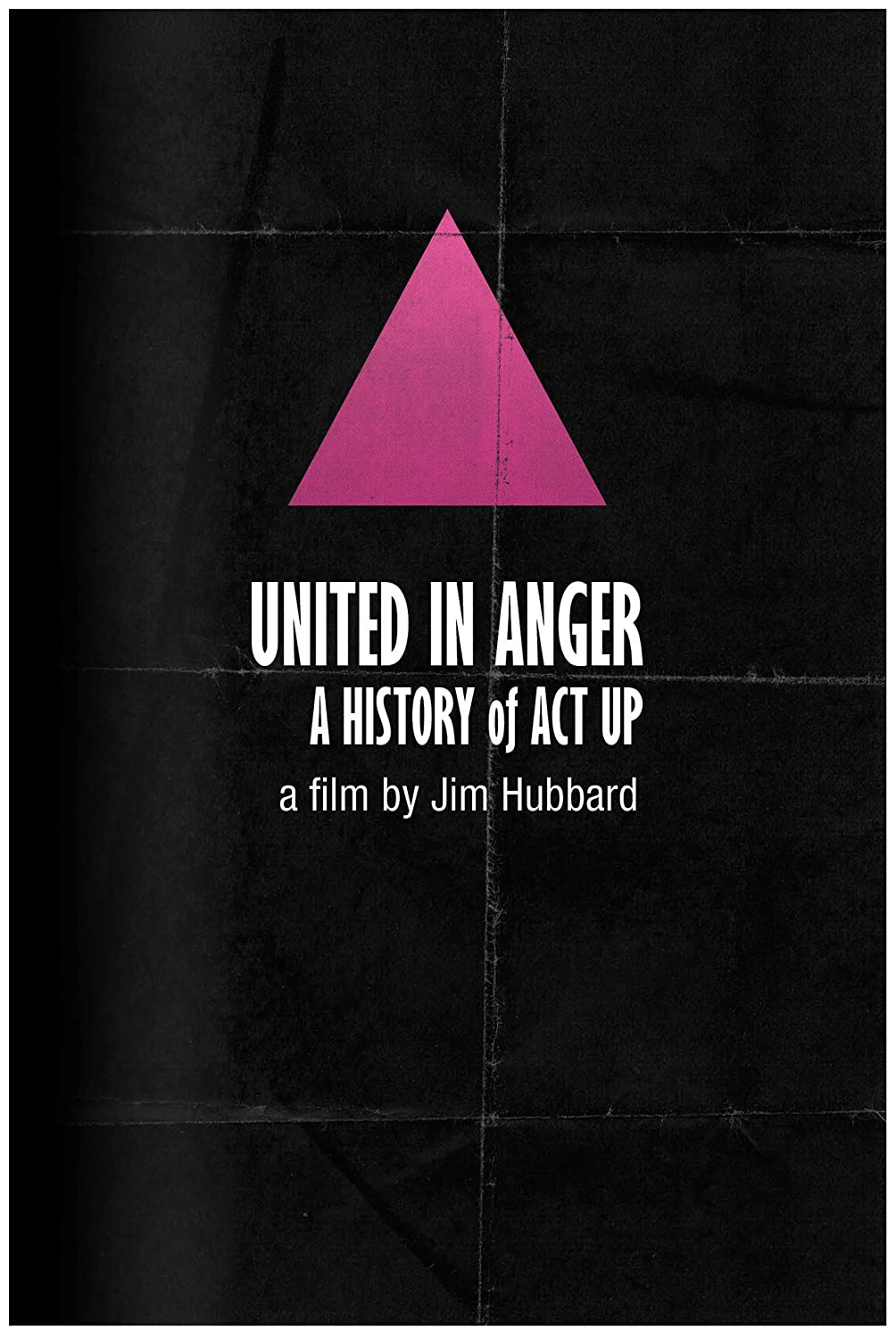United in Anger: A History of ACT UP (2012)

| |
| Directed by | Jim Hubbard |
|---|---|
| Running time | 1h 33m |
| Core concepts this week |
oral history archival footage direct action video nostalgia queer archive activism ACT UP |
| View on Amazon Prime | |
Film background/summary
United in Anger: A History of ACT UP is a documentary directed by Jim Hubbard and produced by Hubbard and Sarah Schulman. The film chronicles the efforts of ACT UP (AIDS Coalition to Unleash Power), a grassroots activist network that used a variety of tactics to raise awareness about HIV/AIDS and challenge discriminatory and harmful practices by the federal government, the Catholic church, the media, etc. The documentary primarily addresses ACT UP’s New York chapter’s work from 1987-1996. The film relies on archival footage from ACT UP’s direct actions, as well as from interviews that Hubbard and Schulman filmed and archived on their website, The ACT UP Oral History Project. All told, Schulman and Hubbard conducted 187 interviews with ACT UP members for this oral history project in order to preserve the legacy of this activist movement. Schulman and Hubbard also created a website for the film, which has many helpful resources for additional reading.
Content warnings
United in Anger contains extensive discussion of death and grief, and several images of dead bodies.
Notes
- This set of lesson plans focuses on the history of ACT UP and the intersection between film and activism. It does not include extensive discussion of what HIV/AIDS is, or about HIV transmission, testing, treatment, or prevention. However, students may have questions about all of these things. If you have time, you may want to build in an additional day to build knowledge about this topic, or cut some time from Day 1’s plan to integrate this content. The Body has useful resources on these topics. I Wanna Know also has valuable resources directed at youth audiences.
- Another film that covers some of the same ground as this film and makes use of the ACT UP Oral History Project and archival footage of ACT UP’s direct actions is David France’s 2012 film, How to Survive a Plague. This film is more well-known, but I thought it would be best to include a different perspective, since France also directed The Death and Life of Marsha P. Johnson. United in Anger and How to Survive a Plague are fascinating to compare; while they make use of much of the same footage, France’s documentary is more narrowly focused on actions targeting pharmaceutical developments and more prominently features the perspectives of white gay men; Hubbard’s film represents a broader set of concerns that ACT UP raised and features interviews with more women and people of color. If you have time, you could extend this week’s work by asking students to watch at least part of How to Survive a Plague (available on Netflix) and compare the different narratives and perspectives that these films present. If you choose to extend the unit in this way, you may want to also bring in Jih-Fei Cheng’s article, “How to Survive: AIDS and Its Afterlives in Popular Media,” which critiques France’s film.
- You might consider the extent to which you want to help students understand the HIV/AIDS pandemic by comparing it to the covid-19 pandemic. On the one hand, this might be a valuable way to help students understand the complex, emotional experience of living through HIV/AIDS, and explore the similarities and differences between these two pandemics. On the other hand, if your students are grappling with trauma, these questions could be extremely difficult to discuss. You may even want to consider swapping out this entire film for another documentary, if you think this topic could be triggering for students. Some alternative choices are listed in the unit response assignment.
- I included a brief excerpt from the Afterword of Roger Hallas’ book for students to read prior to Day 1’s class. This could be cut, if you’d like to cut down the reading material this week.
Materials
- Lesson plans [Word doc]
- Screening quiz [Word doc]
- Secondary texts:
- Day 1 (Optional): Hallas, Roger. Reframing Bodies: AIDS, Bearing Witness, and the Queer Moving Image. Durham, Duke UP, 2009. (Excerpt provided from “Afterword,” pp. 241-247). [pdf]
- Day 2: Hallas, Roger. Reframing Bodies: AIDS, Bearing Witness, and the Queer Moving Image. Durham, Duke UP, 2009. [pdf] (Excerpt provided from Chapter 2: “The Embodied Immediacy of Direct Action: Space and Movement in AIDS Video Activism”, pp. 77-90; 104-105)
- Day 2: CBS, Dan Rather Clip, 1986: AIDS Hits Home (Watch in class)
- Day 3: Juhasz, Alexandra. “Video Remains: Nostalgia, Technology, and Queer Archive Activism.” GLQ: A Journal of Lesbian and Gay Studies Vol. 12, no. 2, 2006, pp. 319-328. [pdf]